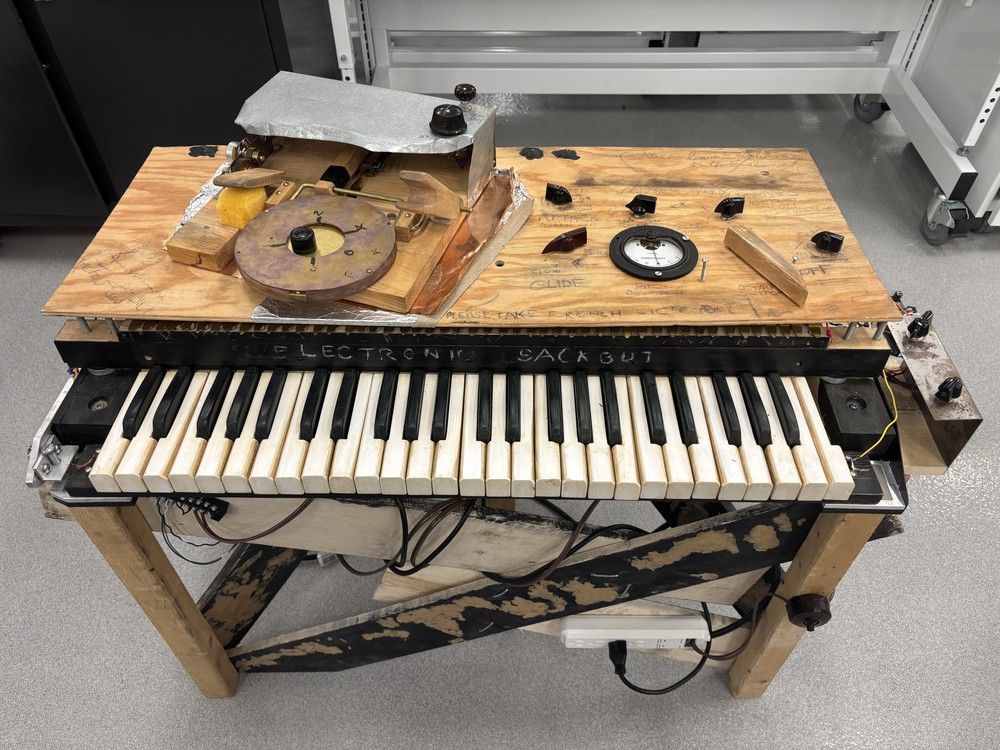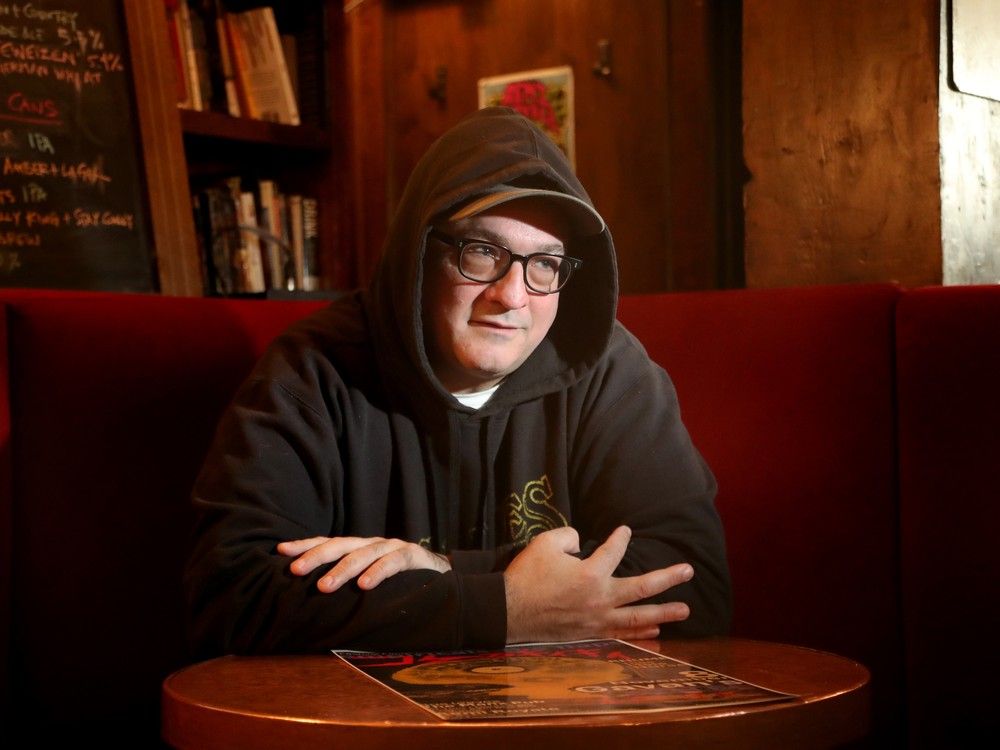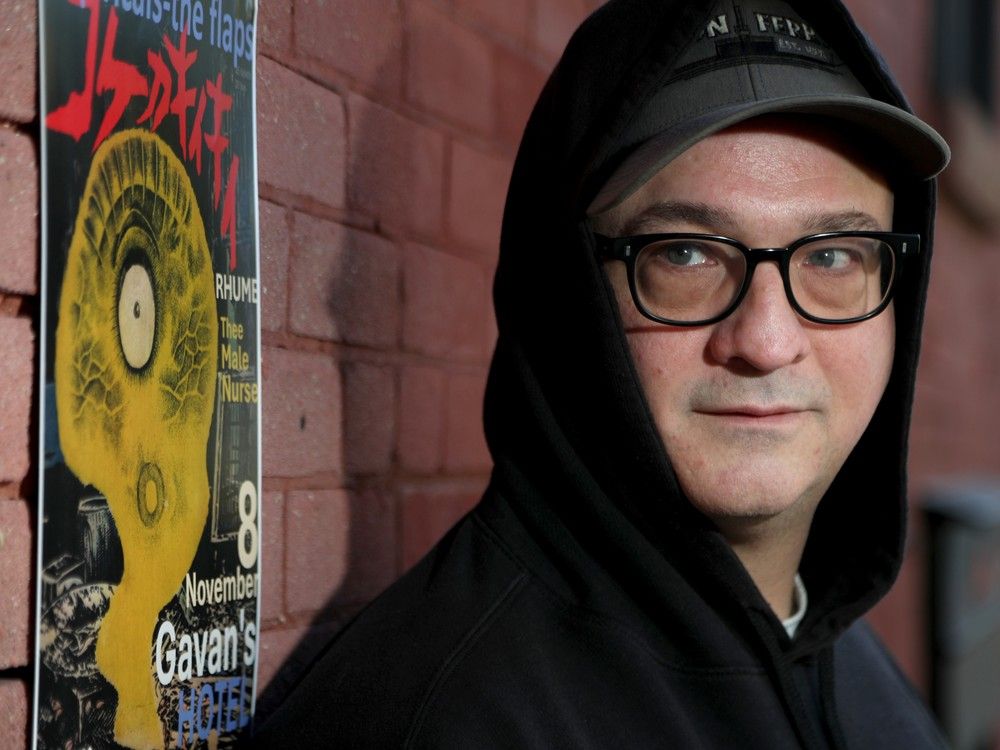Reviews and recommendations are unbiased and products are independently selected. Postmedia may earn an affiliate commission from purchases made through links on this page.
What is widely considered the
world’s first synthesizer
came into existence in Ottawa in the 1940s, and a meticulously reconstructed version of the original will be played publicly for the first time this Saturday in, of all places, Quyon, Que., a quiet backwoods village an hour’s drive west of Parliament Hill, better known for ATVs and French-Canadian country.
The unveiling of the
electronic sackbut
, invented by National Research Council physicist Hugh Le Caine, is just one of a series of 21 musical and comedy events set to take place over the next two weekends as part of
Festival Fantôme
, dubbed the “anti-festival” by a
local Pontiac newspaper
, and created to showcase unusual, strange and playfully avant-garde performers.
Although the festival’s often cult, hard-to-catch acts will bring hundreds of visitors to Quyon, many from as far away as California and Texas, organizer Mike Dubue, a Quyon resident for eight years, admits that there have been no advance sales among the village’s 700-or-so residents. It was much the same during the first-ever Festival Fantôme last year.
“A lot of people come from out of town, people who follow this kind of trippy music,” said Jason Meranger, owner of the
Casse-Croûte du Village chip wagon
, while showing off the massive smoker he uses to make the pulled pork served atop the business’s well-regarded poutine.
Loosely organized around Halloween, Festival Fantôme’s setting on a wooded bend of the Ottawa River associated with the
Quyon Ferry
to Fitzroy Harbour, Ont. lends it an otherworldly charm — as if Stephen King or Shirley Jackson became outsider-music impresarios in west Quebec.

The seamless way locals shift from English to French and the village’s remoteness from the closest fixed link to Ontario add to Quyon’s lost-in-time,
Twin Peaks
atmosphere.
But it was once a prosperous lumber and mining hub and a stop along the old east-west Highway 8 roadway along the north side of the Ottawa River. “Oh, it was a booming town,” says Eddie McCann, former mayor of the municipality of Pontiac, created in 1975 when Quyon merged with a number of neighbouring communities not long before the closure of the nearby Bristol iron mine.
Today there is no hotel, no B&B, and just a handful of businesses remain open on the main street. Most festivalgoers will rely on nightly shuttle buses leaving from Ottawa’s Manx Pub, a sponsor of the event, before returning late the same evening.
“I’ve always described it as like walking into a Tom Waits song,” says Dubue, an Ottawa native and Juno Award-winning producer, composer and musician best known for fronting electronic dance-pop group
Hilotrons
. But since 2017, Dubue has run
Studio Cimetières
, a recording studio, out of a 130-year-old deconsecrated Anglican church in Quyon that’s one of Festival Fantôme’s two venues.
The other venue is recently renovated
Gavan’s Hotel
, a 1940s-era Quebecois tavern just next door to Studio Cimetière that also boasts a 220-person-capacity dance hall, the Shamrock Lounge.
Toronto country-rock band
The Sadies
, one of the more accessible musical acts in this year’s Fantôme lineup, also played the event last year and cut tracks at Studio Cimetière.
“That place is haunted, for sure,” says Sadies drummer Mike Belitsky, who slept at the church during the band’s recording stint there. “One of the rooms, the window is at ground level of the graveyard — you’re like in the ground, in the basement, below grade where bodies are buried.”
Belitsky says Quyon’s small size helps give the crowds of music fans arriving by bus the feel of an invasion: “The people who work there are all like, who are these freaks, I think,” he says. “All of a sudden, you’re inundated with three or four hundred people you’ve never seen before.”
Some of the acts appearing at Fantôme rarely perform live, especially in venues as small as those in Quyon.
One of the festival’s main draws, among U.S. ticket holders particularly, is California experimental rock band
Secret Chiefs 3
and its leader, Trey Spruance, also on the lineup as NT Fan. Hard-to-classify artists like comedy provocateur
Neil Hamburger
and
Mr. Let’s Paint
verge on performance art or noise and will likely find few converts in west Quebec.
Longtime Gavan’s business manager Elizabeth Kluke refers to Dubue’s festival programming as a “new type of music … I never even heard of that band — period,” but (after pointing out the Shamrock Lounge’s original wood-panelled back-bar refrigerators) mentions she has been educating herself about the acts soon to perform at the venue: “I’ve been watching
Mike’s Facebook page
.”
The esoteric lineup may have played a role in Dubue’s failure to secure the arts funding he applied for through the MRC des Collines-de-l’Outaouais.
In two separate rejections communicated to a not-for-profit he enlisted to make the application, the MRC said his $45 door fee made the festival inaccessible and that other funding agencies might be better positioned to approve the application, given that Dubue is working with professional artists to mount the event. Dubue believes the MRC failed to recognize that the festival will bring tourists and money to the area.
That few Quyon locals are planning to attend does not faze
Gavan’s owner Jim Cain
, whose grandfather once called square dances at the Shamrock and who purchased the tavern after selling his high-tech business to a New York digital-services firm several years ago.
“Quyon is a very small, old-school country music kind of town,” says Cain. “When we book a country music band, that’s when we draw the hyperlocal community.”
Then there is Dubue’s programming and its occasional focus on the experimental — events like Canadian composer, instrument designer and sound artist
Gayle Young
’s scheduled performance featuring the electronic sackbut, the synthesizer invented in Ottawa that will be on loan to Fantôme from the Ingenium group of museums, including the Canada Science and Technology Museum.
Not exactly
Ron “The Silver Fox” McMunn
, the Ottawa Valley country singer who led the house band at Gavan’s for nearly a decade. “Years ago, it was country — just country,” says Carmen Marcotte from behind the counter at her sister’s gas station and convenience store, Dépanneur Marcotte, one of the few businesses remaining on Quyon’s main street. Like others here, Marcotte is a fan of Dubue’s and holds out hope the locals will connect with his brand of entertainment. “This village, you have to promote stuff and encourage them — because it’s a pretty old community.”

Cain calls Dubue “a genius,” and sees the neighbouring music studio as a positive when buying Gavan’s. “As far as how the town perceives it, everybody likes to be part of a success story, but this is a big evolution,” says Cain. “There are no baby steps in towing that line between pushing for growth and being respectful of tradition.”
Many in the village are more interested in another business under new ownership, just up the road from Gavan’s and Studio Cimetière: the
Egan Mill.
It’s an artisanal whole wheat flour mill, local produce market and soon-to-be cafe built into the historic mill on the Quyon River once owned by Ottawa Valley lumber baron John Egan.
The business has more in common with Studio Cimetière and Gavan’s than you might suspect.
That old mill, once a hub of activity in Quyon, had been abandoned for 15 years before Isabelle Lajoie and Marc Bergeron, a married couple who own a hobby farm nearby, bought three years ago. “People were excited to finally see something happening with the mill,” says Lajoie, an architectural technologist who will also run the Egan Mill
The idea initially was to produce the grain the couple needed to feed their own livestock. But soon the project evolved: Lajoie and Bergeron invested in Danish milling equipment that Bergeron, an electromechanical technician by trade, assembled in an outbuilding alongside the historic structure, with a focus on automating the process.
Visitors to a farmers’ market can see the results through an interior window: a gleaming lab-like space that looks like where Stanley Kubrick might source his flour.
Lajoie coined a slogan for their newfangled mill — “when history meets the present” — that could describe exactly what’s taking place down the hill at Gavan’s and Studio Cimetière: old venues and a “new type of music,” as Elizabeth Kluke, Gavan’s business manager, likes to put it.
The electronic sackbut, meanwhile, will be set up at Studio Cimtière, which seats 80 and is organized around the studio’s live-tracking room in the nave and chancel and below the structure’s 19th-century stained glass windows. Dubue calls the church “my main instrument.”
In August, Tom Everrett, a Carleton prof and curator at Ingenium leading a project to reverse engineer and recreate the Le Caine electronic sackbut, brought the remade instrument to Studio Cimetière to record Gayle Young playing it.
These were the first recordings made of the instrument since 1954, and Young wrote the book on Le Caine —
The Sackbut Blues: Hugh Le Caine, Pioneer in Electronic Music
, a biography. The recreated electronic sackbut that those at the concert on Saturday will see has been painstakingly made by hand, down to its scrap-wood mount and the scribbled instructions running above the keyboard, apparently in chalk.
“If people in Quyon knew that world, I think they’d be impressed,” says Dubue.
For more smart picks and offbeat stories from around the city, subscribe to Out of Office, our weekly newsletter on local arts, food and things to do.
Love concerts, but can’t make it to the venue? Stream live shows and events from your couch with VEEPS, a music-first streaming service now operating in Canada. Click here for an introductory offer of 30% off. Explore upcoming concerts and the extensive archive of past performances.



